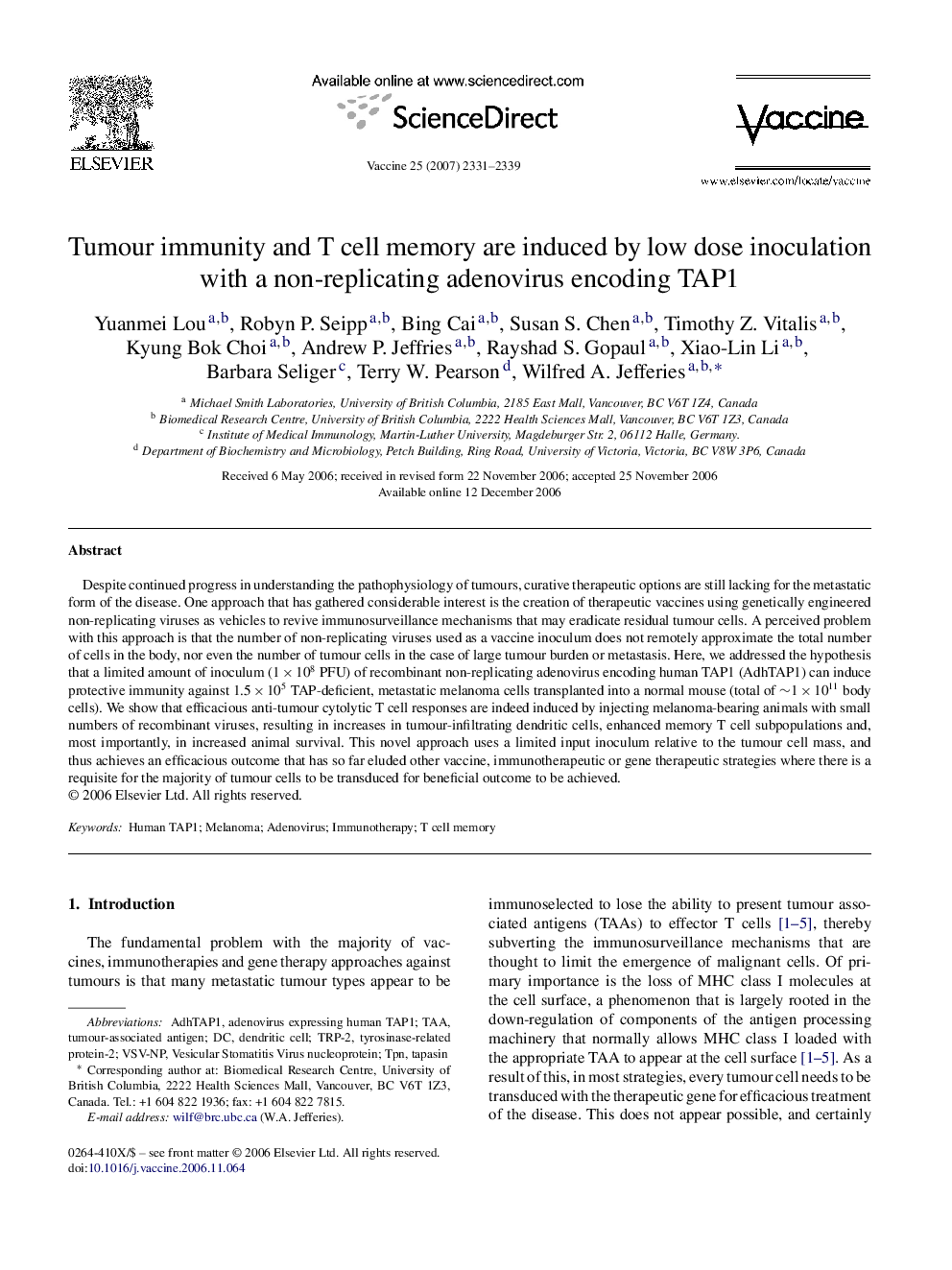| Article ID | Journal | Published Year | Pages | File Type |
|---|---|---|---|---|
| 2408479 | Vaccine | 2007 | 9 Pages |
Despite continued progress in understanding the pathophysiology of tumours, curative therapeutic options are still lacking for the metastatic form of the disease. One approach that has gathered considerable interest is the creation of therapeutic vaccines using genetically engineered non-replicating viruses as vehicles to revive immunosurveillance mechanisms that may eradicate residual tumour cells. A perceived problem with this approach is that the number of non-replicating viruses used as a vaccine inoculum does not remotely approximate the total number of cells in the body, nor even the number of tumour cells in the case of large tumour burden or metastasis. Here, we addressed the hypothesis that a limited amount of inoculum (1 × 108 PFU) of recombinant non-replicating adenovirus encoding human TAP1 (AdhTAP1) can induce protective immunity against 1.5 × 105 TAP-deficient, metastatic melanoma cells transplanted into a normal mouse (total of ∼1 × 1011 body cells). We show that efficacious anti-tumour cytolytic T cell responses are indeed induced by injecting melanoma-bearing animals with small numbers of recombinant viruses, resulting in increases in tumour-infiltrating dendritic cells, enhanced memory T cell subpopulations and, most importantly, in increased animal survival. This novel approach uses a limited input inoculum relative to the tumour cell mass, and thus achieves an efficacious outcome that has so far eluded other vaccine, immunotherapeutic or gene therapeutic strategies where there is a requisite for the majority of tumour cells to be transduced for beneficial outcome to be achieved.
